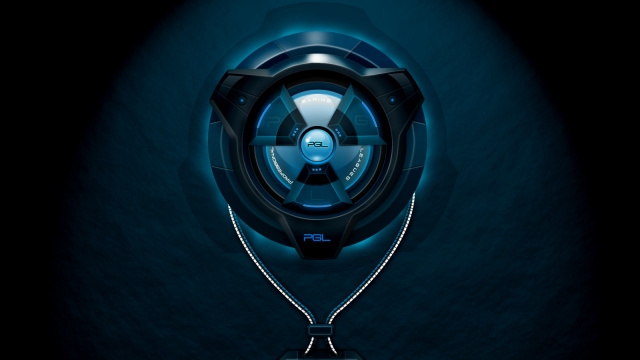
Deepfake technology has emerged as a powerful tool in the realm of visual storytelling, captivating audiences and challenging our perceptions of reality. By harnessing the potential of artificial intelligence, deepfakes allow creators to seamlessly manipulate and superimpose one person’s likeness onto another’s, creating astonishingly convincing videos that blur the line between fact and fiction. This groundbreaking technology has already made waves in various industries, from entertainment to politics, leaving us to ponder the ethical implications and exciting possibilities it holds for the future.
With deepfake technology, the possibilities seem endless. It opens up new avenues for filmmakers and content creators to push the boundaries of storytelling, enabling them to bring historical figures back to life, resurrect beloved actors, or even reimagine iconic scenes in alternative ways. The ability to alter visual narratives with such precision offers a fascinating playground for artistic expression, stimulating our imagination and ushering in a new era of creativity.
However, as with any technological advancement, deepfake technology is not without its concerns. The potential for misinformation and malicious use looms large, highlighting the need for strict regulations and ethical guidelines to prevent the spread of fabricated videos that could further erode trust in media and fuel deception. As the technology becomes more accessible and sophisticated, it becomes increasingly important to navigate these challenges and ensure responsible usage.
In this article, we will delve into the realm of deepfake technology, exploring its origins, its current applications, and its potential to redefine the future of visual storytelling. We will examine the ethical considerations and discuss the safeguards that need to be in place, while also celebrating the immense creative opportunities it presents. Prepare to journey through the fascinating world of deepfakes, where reality can be manipulated with just a few lines of code, and where the power of imagination has found a new canvas.
Understanding Deepfake Technology
Face Swap
Deepfake technology is an emerging field that combines artificial intelligence (AI) and computer graphics to create highly realistic videos and images. By using deep learning algorithms, deepfake technology can manipulate or replace the original content in a way that is often indistinguishable from reality. This has led to both excitement and concern, as the potential applications of deepfake technology are vast, ranging from entertainment and visual storytelling to malicious misinformation campaigns.
One of the key components of deepfake technology is the use of generative adversarial networks (GANs). GANs consist of two neural networks: a generator and a discriminator. The generator creates fake content, while the discriminator tries to identify whether the content is real or fake. Through an iterative process, these networks learn from each other, improving the quality of the generated deepfakes over time.
Deepfake technology has gained popularity because of its ability to convincingly depict individuals saying or doing things they never actually did. This has raised concerns about the spread of misinformation and the potential for political manipulation. With deepfake videos becoming increasingly sophisticated, it is becoming more difficult for the average person to detect whether a video is real or fake, which poses a significant challenge for organizations and individuals wanting to combat the spread of false information.
However, deepfake technology is not solely a tool for deception. It also has the potential to revolutionize the field of visual storytelling. Filmmakers can use deepfake technology to seamlessly incorporate historical figures or deceased actors into their films, creating new possibilities for storytelling and character development. Additionally, deepfake technology can be used to enhance special effects, generating realistic creatures or environments that would otherwise be costly or time-consuming to create.
In conclusion, deepfake technology is a powerful tool that has the potential to transform how we tell stories visually. While it has raised concerns about misinformation and manipulation, it also offers exciting possibilities for creativity and innovation. As deepfake technology continues to evolve, it is important for society to explore both its ethical implications and its potential benefits.
Applications of Deepfake in Visual Storytelling
Deepfake technology has revolutionized the way stories are visually told, opening up a world of endless possibilities. By seamlessly blending real and fictional elements, deepfake technology enhances the immersive experience for the audience. Let’s explore some of the captivating applications of deepfake in visual storytelling.
Character Transformations: Deepfake enables filmmakers to seamlessly alter the appearance of their characters, breathing life into their wildest imaginations. From swapping faces to changing physical attributes, this technology allows storytellers to bring characters from the realms of fiction into our reality. Whether it’s a historical figure stepping into contemporary times or a human taking on the appearance of a mythical creature, deepfake adds a new dimension to character-driven narratives.
Visual Effects Augmentation: Gone are the days when visual effects relied solely on CGI. Deepfake technology empowers visual effects artists to enhance their creations by integrating realistic facial expressions and movements seamlessly. This advancement allows for more authentic and believable interactions between CGI and real actors, pushing the boundaries of visual storytelling to new heights.
Historical Reimaginings: With deepfake, filmmakers can transport us back in time by recreating historical events and iconic figures with astonishing accuracy. By using available footage and images, deepfake technology allows us to witness historical moments from alternative perspectives, creating a captivating blend of fact and fiction. This opens up doors for narrative exploration while promoting a deeper understanding of the past.
In conclusion, the applications of deepfake in visual storytelling are vast and exciting. By harnessing the power of this technology, storytellers can create immersive experiences, visually transform characters, enhance visual effects, and even reimagine historical events. As deepfake continues to evolve, we can expect a future where the line between reality and fiction blurs, leading to a whole new era of visual storytelling.
Challenges and Ethical Considerations
Unleashing the power of deepfake technology comes with its fair share of challenges and ethical considerations. As this advanced technology grows in sophistication, it becomes increasingly important to address these issues to mitigate potential risks and ensure responsible use.
First and foremost, one of the key challenges of deepfake technology lies in its potential to deceive and manipulate individuals. With the ability to create highly realistic fake videos, there is a significant risk of spreading misinformation and misrepresenting individuals or events. This poses a threat to our collective trust and can have far-reaching consequences, particularly in the realms of politics, journalism, and public discourse. Finding ways to authenticate and verify content becomes crucial in maintaining the integrity of information.
Secondly, deepfake technology raises ethical concerns surrounding consent and privacy. The ease with which one can swap faces and manipulate videos raises questions about the rights of individuals depicted in these altered visuals. Fabricated videos can be used to harass, defame, or exploit people, leading to emotional and psychological harm. Stricter regulations and guidelines are needed to safeguard individuals’ privacy and ensure that deepfake technology is not abused to infringe upon their rights.
Lastly, the emergence of deepfake technology raises serious implications for the field of criminal justice. The potential to create convincing fake evidence can undermine the reliability of visual evidence in legal proceedings. This brings about challenges in determining the authenticity of video evidence and could potentially lead to wrongful convictions or acquittals. The legal system needs to evolve to address these concerns, ensuring that deepfake technology doesn’t undermine the pursuit of justice.
In conclusion, while deepfake technology promises exciting opportunities for visual storytelling, it also brings forth a range of challenges and ethical considerations. Safeguarding against deception, protecting privacy, and preserving the integrity of evidence are only a few of the many issues that need to be carefully addressed and regulated to ensure the responsible and ethical use of this powerful technology.


